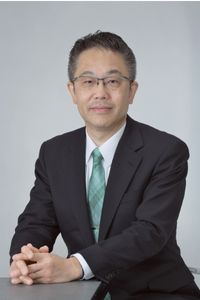Creating Preventive Medicine from Disaster Reconstruction
Iwate Tohoku Medical Megabank Organization
Kozo Tanno, Executive Director
(Professor, Department of Hygiene and Preventive Medicine)
 The Iwate Tohoku Medical Megabank Organization (IMM) was established under Iwate Medical University’s Disaster Reconstruction Center in FY2012 to conduct the Tohoku Medical Megabank Project, the 2 main pillars of which are a genome cohort and a biobank, in collaboration and cooperation with the Tohoku Medical Megabank Organization (ToMMo). Under the leadership of Dr. Kenji Sobue, the first Executive Director, and Dr. Makoto Sasaki, the second Executive Director, the IMM aims to evaluate the health impacts of the Great East Japan Earthquake and Tsunami and to develop prevention and treatment (personalized prevention and personalized medicine) tailored to each individual’s constitution. Since FY2013, we have been conducting a health survey (a cohort study of local residents) mainly in the coastal areas of Iwate Prefecture that were affected by the disaster. Once again, we would like to sincerely thank the more than 32,000 people who have cooperated with the survey as well as the many local governments, health screening facilities, medical facilities, medical associations, and others who have given us their support.
The Iwate Tohoku Medical Megabank Organization (IMM) was established under Iwate Medical University’s Disaster Reconstruction Center in FY2012 to conduct the Tohoku Medical Megabank Project, the 2 main pillars of which are a genome cohort and a biobank, in collaboration and cooperation with the Tohoku Medical Megabank Organization (ToMMo). Under the leadership of Dr. Kenji Sobue, the first Executive Director, and Dr. Makoto Sasaki, the second Executive Director, the IMM aims to evaluate the health impacts of the Great East Japan Earthquake and Tsunami and to develop prevention and treatment (personalized prevention and personalized medicine) tailored to each individual’s constitution. Since FY2013, we have been conducting a health survey (a cohort study of local residents) mainly in the coastal areas of Iwate Prefecture that were affected by the disaster. Once again, we would like to sincerely thank the more than 32,000 people who have cooperated with the survey as well as the many local governments, health screening facilities, medical facilities, medical associations, and others who have given us their support.
We have previously reported on the health impacts of the Great East Japan Earthquake and Tsunami, noting that social isolation, mental health problems, obesity, and metabolic syndrome increased after the disaster. That said, we found no differences in mortality rates after the disaster, regardless of the extent of its impact. We confirmed the importance of medical and public health efforts after a large-scale natural disaster. We will continue to evaluate the long-term health impacts after a disaster and provide useful information to promote health after a large-scale natural disaster.
The biobank, which is another pillar of the IMM, is steadily yielding results. Together with the ToMMo, we have created and are operating a system (a biobank) in which biological samples and information from people who participated in our health survey are carefully stored. Those samples and that information are then allotted to research institutes and companies under strict screening procedures or they are used in joint research. The IMM’s unique approach has been to score the genetic “susceptibility” to lifestyle-related diseases, and especially cerebral infarction (a polygenic risk score); this has improved the accuracy of that score’s predictive ability. Based on these results, we are currently conducting research to develop more effective methods of preventing cerebral infarction. We have also focused on the switches that control genetic information (epigenomics) and we have revealed the characteristics of people who live long, healthy lives as a result of those switches being turned on and off. Moreover, we have, in collaboration with several genomic cohort studies in Japan, laid the foundation for analysis of the relationship between genetic information and diseases using data from more than 360,000 people. Using these research results and research platforms, we will continue to conduct research that will help prevent disease and facilitate a healthy lifespan among the Japanese population.
Our goal is to develop and disseminate methods to prevent disease in the pre-disease stage (before disease has developed) and to detect and treat disease early on while the disease is still mild. Reconstruction since the Great East Japan Earthquake and Tsunami is progressing steadily, step by step. We will also continue to create preventive medicine from disaster reconstruction, step by step. We ask for your continued cooperation and support.










